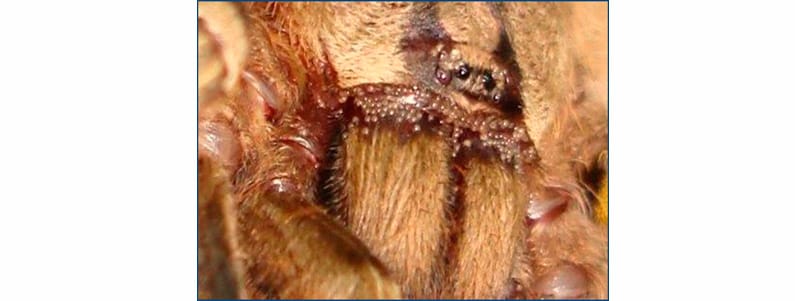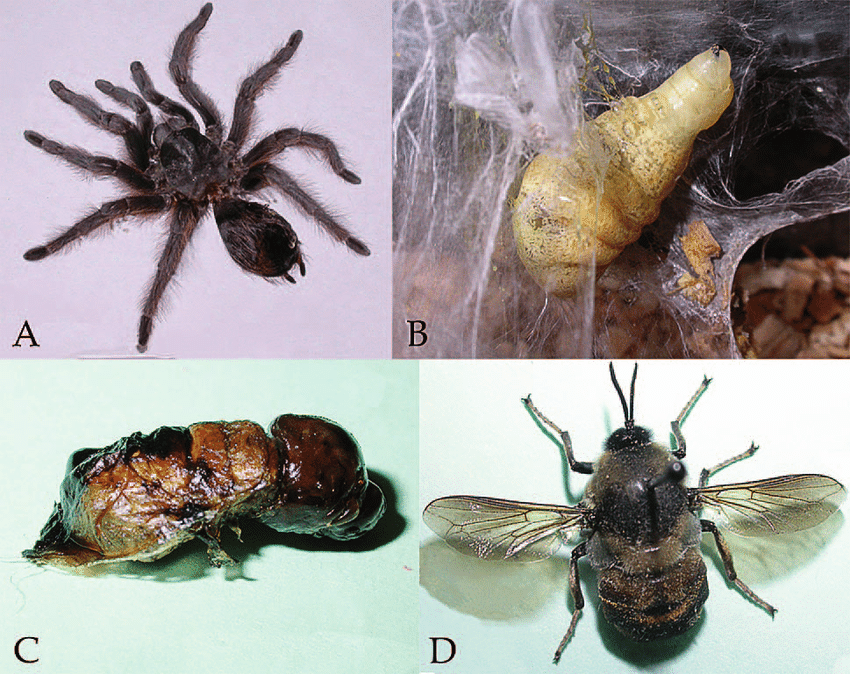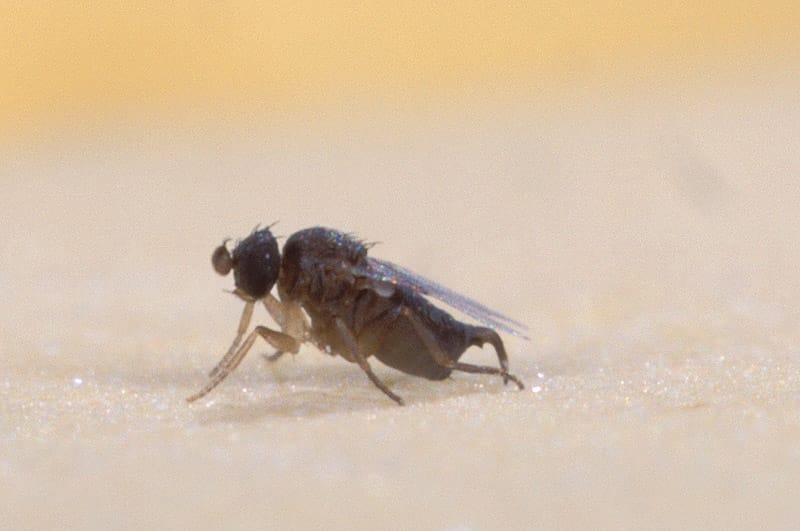Parasites in tarantulas.
A look at the most common parasites that can infect tarantulas.
Tarantulas can be infected with parasites some of which are fatal for the host.
Mites
Probably the most common parasite that afflict tarantulas are mites. Mites as a general rule are harmless. They can come from live food and as food gets low in the enclosure they look for a host to carry them to their next location, of course in captivity this doesn't happen and they spend their time mostly around the tarantulas mouth eating the detritus of the tarantula's meals. The population of mites can explode and they can be very unsightly in your enclosure and very irritating for the tarantula. Firstly if you spot mites you should put your enclosure in another room to stop the spread of the mites to your other enclosures. To get rid of mites put a small amount of vegetable matter in the enclosure and remove it every couple of hours, this will tempt the mites away from the tarantula, once you get the numbers low enough and the tarantula is clear, a full clean of the enclosure usually clears up the issue, wash all the decoration etc. Lastly if the conditions are correct for them add spring tails and or some species of isopods to your enclosure, they are a fantastic clean up crew for your enclosure and will out compete the mites for resources.
Parasitic mites that can harm your tarantula are rare and are usually, brought to your collection from wild caught tarantulas. To avoid parasitic mites don't buy wild caught specimens and if you do, quarantine that animal away from your collection for at least a full moult cycle and you can be sure that there are no mites hitching a ride.

Nematodes
A nematode infection is a very serious issue and very often results in the death of your tarantula.
Nematodes are microscopic non-segmented worms that occur naturally in soil around the world, there are species that can infect every species of animal on the planet. They pass bacteria into the host and this is mostly lethal. Most nematode infections can be traced back to wild caught individuals in a collection, and can have devastating effects, again this shows the importance of quarantining any wild caught tarantulas you add to your collection or avoiding purchasing wild caught individuals altogether.
Usually nematodes enter the host through a small opening such as the anus or book lungs, very rarely the mouth as it is very efficient at filtering out unwanted items entering. They then spread through the spider and emerge through the mouth, due to this infection is usually only noticed in the late stages and by this time it is,more often, too late to save the tarantula. Infections are very rare across entire collections if the correct procedures are followed such as quarantining individuals for an entire moult cycle.
Nematodes have in some cases been successfully treated but this is rare and more research needs to be done into the subject.
Infected tarantulas may:
- Walk on their tiptoes
- Stop eating
- Have a white mass around their mouth
- Have a white and sticky discharge near their chelicerae
- Seem unsteady on their feet and unable to balance themselves, where a tarantula uses it's pedipalps, at times as extra legs, once infected it becomes unable to do so as they hold them against their mouth parts
- Have a very wet mouth area from drooling
- spend more time than usual around their water dish
of course this list is not comprehensive and you should take precautions when you notice any unusual behaviour from your tarantula.

Acroceridae Spider Flies
These small flies are usually brought into collections by wild caught specimens. They lay eggs on the spider which, once they become larvae crawl into the spider's book lungs and into the body where they can remain for months or even years.
Once the larvae reach the 4th instar they become the most destructive destroying the tarantulas internal tissues until bursting out from the tarantula and killing the host.
Infections are rare, though again it shows the importance of avoiding adding wild caught specimens to captive collections.

Phorid Flies
There is debate as to how dangerous a phorid fly infection actually is to the tarantula, there is anecdotal evidence for both sides of the argument. They are often confused with gnats and fruit flies but can be distinguished by the humpback appearance and their tendency to run rather than fly.
The main dangers they pose are to eggsacs and are believed to play a role in spreading nematodes and other parasites through collections.
The easiest way to keep these pests at bay is to spot clean your tarantula regularly and make sure that there is no decaying organic matter present in the enclosure, such as old food, droppings or dead plants. Though the addition of a clean up crew such as spring tails and some species of isopods is also recommended.

In conclusion, most parasites find their way into captive collections via the addition of wild caught specimens and if you are unable to quarantine these away from your collection for, at least, an entire moult cycle. Best practice is to stay away from wild caught specimens and wait for captive bred animals to become available on the market.

